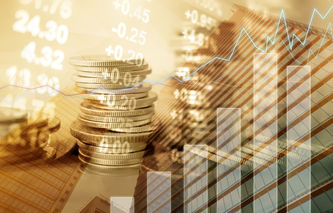Every day the world becomes a little bit smaller. Because of the requirements of a global marketplace, the need for currency trading is growing. In fact, even consumers traveling to other countries need to have a fundamental understanding of foreign currency exchange, or forex rates.
Foreign Currency Exchanges
The Internet makes it easier than ever to purchase goods or services sold in a foreign currency, and have those purchases converted back into the native currency appearing on a credit card statement. On an even larger scale there are international business transactions, or multinational corporations, that need to deal with foreign currency conversions as part of their day-to-day operations or even in the development of financial statements.
At an even higher level, there are national governments trading in foreign currencies when attempting to balance the impact of imports and exports on their economies. These governments are not trading for speculative reasons, but making adjustments to economic imbalances resulting from large trade deficits or surpluses with foreign countries.
Forex Impacts on Investors
Investors that have purchased the stock of a multinational corporation, and most large companies today are multinational, should be aware of the impact foreign exchange rates can have on their overall investment return.
Example: Impact on Earnings
An American investor might believe the outlook for the economy in China is a promising one. By purchasing a share of stock in a Chinese company, the investor now has two possible means of increasing their return on investment.
Because the economies of each nation are always changing relative to one another, this movement results in a moderately unstable condition with respect to currency exchange.Forex Expert, Moneyzine.com
The first possibility is one that might result from the growth in earnings, or profitability, of the Chinese company itself. The second way an investor might be rewarded is through the relative strengthening of Chinese currency, the Yuan, against the dollar. If the Yuan strengthens, then upon selling the Chinese stock, the investor has an opportunity to increase their return based on the forex rate. Because the economies of each nation are always changing relative to one another, this movement results in a moderately unstable condition with respect to currency exchange. Said another way, the exchange rates of foreign currencies are in a constant state of adjustment. It is the change in currency exchange rates that makes trading so intriguing.
Foreign Currency Trading
We just provided an example outlining the ways an investor can benefit from purchasing a share of stock in a foreign company. However, investors soon came to realize they did not have to purchase stock in foreign companies to benefit from these economic imbalances and the resulting swings in exchange rates. They could trade directly in foreign currencies.
Forex Example: Long and Short Positions
Going back to our example, if an investor believed the developing economy of China would strengthen relative to the mature U.S. economy over the next several years, they might want to purchase Chinese Yuan. This is known as taking a long position. On the other hand, if an investor believed the Chinese economy was going to collapse relative to the U.S. economy, the investor might decide to sell Yuan. This is known as taking a short position.
Speculation and Currency Trading
There is a second group of investors that are intrigued by the movements of currencies relative to one another. These individuals are often referred to as speculators. Generally, speculators try to take advantage of market inefficiencies or short term movements in currencies. This is sometimes referred to as arbitrage. These traders might take a position in currencies for only a couple of hours or even minutes. Speculators are extremely active traders in foreign currency, and watch the market 24 hours a day. The market is large, active, and currencies can even be exchanged without incurring a brokerage charge. These combinations of factors make speculating very attractive to some investors.
Reading Exchange Rates and Spreads
The published rates are determined by the currency exchange market. Reading an exchange rate is a fairly simple process. The exchange rate is always quoted using a currency pairing and ISO abbreviations. Looking at the following example: EUR/USD 1.2213/16 This example outlines the exchange rate between the euro and the U.S. dollar. The ISO abbreviations above are those used for those two currencies. The order of the rate is also important. The first item is referred to as the base currency, in this case the euro. The second item is referred to as the quoted currency. The quoted price in this example is how many U.S. dollars it would take to purchase one euro.
Bid Prices
The exchange rate itself is usually quoted in terms of a pairing. From this pairing the investor can determine both the bid and asking price for this exchange. The bid price is the one used when selling the currency, and represents the amount received when selling one unit of the base currency. In the above example, the seller would receive $1.2213 for each euro sold. The bid price will always be lower than the ask price.
Ask Prices
The second component in the exchange rate refers to the ask price. This is the price paid if a trader wanted to buy the base currency. The ask price is determined by adding the two digits to the final two positions of the bid price. So in this example, the ask price is $1.2216. (In some situations, such as a quote of 1.2298/05 remember that the ask price will always be higher, or $1.2305 in this case.)
Calculating Spreads
The difference between the ask price and the bid price is known as the spread. The size of the spread is frequently determined by the trade amount. When trading less than $100,000 in currency, the spread may be in the range of 50 to 200 basis points or PIPs. A basis point is equal to 0.0001. When trading currencies in excess of $1,000,000, the bid / ask spreads will be much smaller; typically, in the range of 0.0005 or 5 basis points or PIPs. In the example above, the spread would be the difference between $1.2216 and $1.2213 or 0.0003 which can also be stated as 3 basis points. Traders of currency like to see small spreads. That's because smaller spreads offer the trader the ability to realize a profit with smaller movements in the exchange rates.
Credit Card and Bank Spreads
Anyone that's charged something on their credit card using a foreign currency, will likely see a larger spread; somewhere in the range of 200 to 300 PIPs. When visiting a bank or an exchange bureau, the spreads can be even larger; in the 300 to 1,000 range. In addition, a service charge, or sales commission, is oftentimes levied for providing the service.
Currency Exchange Market
Back in 1971, a decision was made to uncouple the U.S. dollar from gold. This move created the opportunity for the dollar to float relative to other world currencies. In turn, a currency exchange market emerged that would allow those interested in taking a position in a foreign currency. Trading on the currency exchange market, however, takes place on an inter-bank or dealer basis. There is also an Over-the-Counter market where two parties can take counter positions via an electronic network. However, unlike stock markets, the currency exchange is not centralized.
Exchange Networks and Forex Trading Volumes
Dealers often use exchange networks such as those provided by Bridge or Reuters. Using this network for information, dealers can often agree to a rate, and the trade happens. The major centers for currency trading are London, New York, Tokyo, Zurich, Frankfurt, Hong Kong, Singapore, Sydney, and Paris. The currency exchange trading volume dwarfs the stock and bond markets. Daily volume in currency is typically in excess of $6.6 trillion (October 2019). Compare this to the $50 billion that might change hands on the NYSE Euronext. This active trading volume makes currency the most liquid market in the world. In addition to liquidity, the high trading volumes of this market make it nearly impossible for individuals or institutions to influence exchange rates. Even central banks find it difficult to move rates, especially when it comes to the U.S. dollar, yen, or euro. The currency market is open 24 hours a day, five days a week. Active trading in the U.S. begins at 8:00 a.m. EST and ends at 5:00 p.m. EST in the New York market. The currency market follows the Pareto Principle, in that over 80% of exchanges involve only a few currencies. The following currency pairs dominate this market: EUR/USD, USD/JPY, EUR/JPY, USD/CAD, EUR/GBP, GBP/USD, USD/CHF, AUD/USD, and AUD/JPY.
Conducting a Currency Trade
A currency trade is a relatively simple process, which involves only three steps. Since the dealer does not know if a trader will buy or sell, there's an incentive to always provide a true market price. The three steps of a trade include:
A trader requests a price from a dealer for a currency pair, along with the amount they would like to trade.
The dealer response to the request with a bid and ask price.
The trader responds to the bid and ask price in one of three ways: buy (mine, or I take), sell (yours, I give you, or I sell) or refuse.
The transaction only occurs if the final response from the trader is either a buy or a sell. To limit losses, dealers will require collateral, which is also referred to as margin. Traders can limit their losses by specifying a stop-loss rate for each open trade they own. For those familiar with futures trading, much of the terminology and tools are similar.
Online Currency Trading and Training
Investors that have never traded currency before should consider either taking a course in forex, or use one of the many online training courses available over the Internet. Many forex trading operations supply software tools free of charge. This allows potential investors to gain a better understanding of the market before trading in real money. Dealers will oftentimes supply new clients with demonstration software, online tutorials, or even forex games.
Forex Warnings
The Commodity Futures Modernization Act of 2000 makes it clear the United States Commodity Futures Trading Commission has the jurisdiction, and authority, to investigate and take legal action to close down a wide assortment of unregulated firms offering or selling foreign currency futures and options trading contracts to the general public. Individuals that have been solicited to trade foreign currency contracts should know how to spot fraudulent offers. While much of the trading is legitimate, some forms of foreign currency trading have been known to defraud the public. Here are some of the warning signs:
Stay away from opportunities that sound too good to be true such as get rich quick schemes
Avoid companies that predict or guarantee large profits
Stay away from companies that promise little or no financial risk
Question firms that claim to trade in the "interbank market"
Be wary of sending or transferring cash on the Internet, by mail or otherwise
Currency scams often target members of ethnic minorities
Be sure to get a copy of the company's performance track record
Don't deal with anyone who won't provide background information
Investors interested in forex or currency trading should also visit the CFTC's forex fraud web page, and review their list of warnings firsthand.




